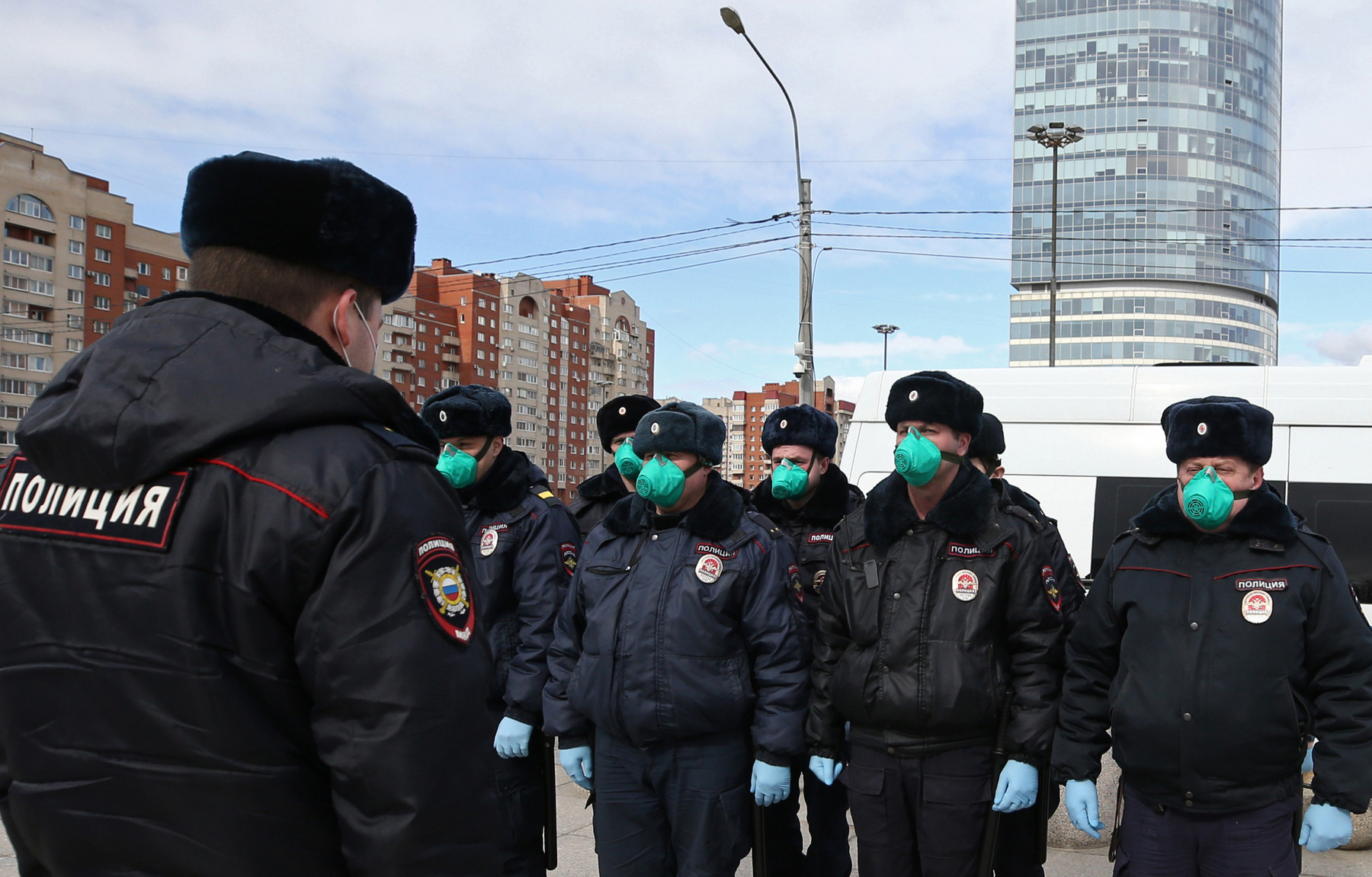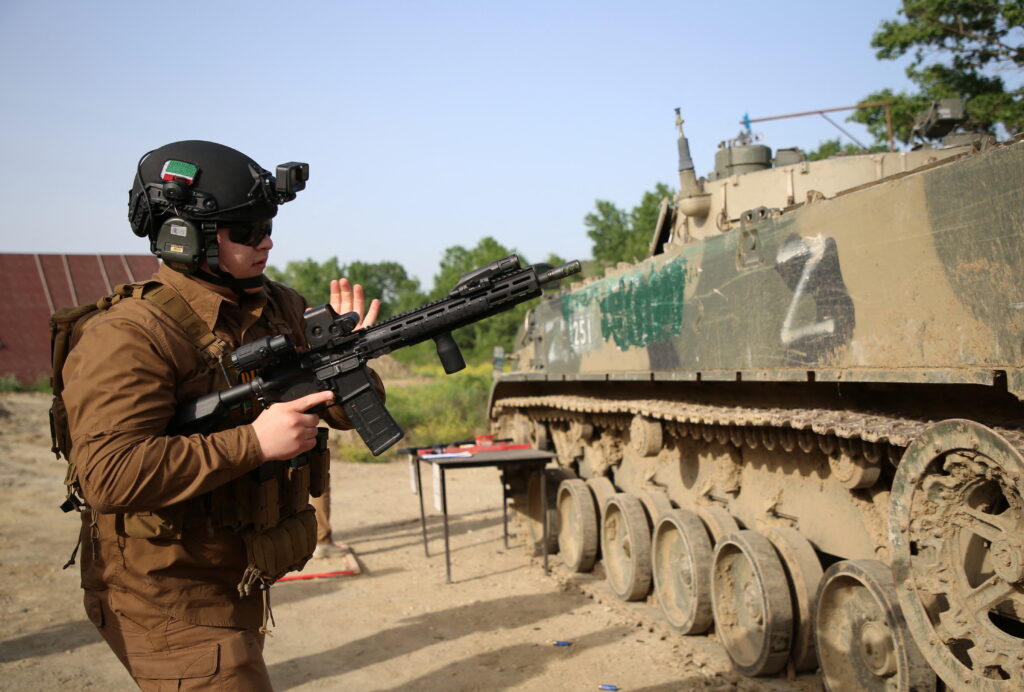In light of the COVID-19 pandemic, the authorities in Moscow have agreed to provide greater autonomy to the regions to help them fight the epidemic. The highly centralised «power vertical» which dominates Russian politics has turned out to be ineffective during a real national emergency. However, Russia’s regions have long since lost any semblance of real self-government, and have gotten used to teams appointed from above making the real decisions. In the midst of this crisis, is it now possible to speak of a new «revival» of federalism in Russia?
As the coronavirus spread across Russia and the number of infected rose, local officials, by force of habit, waited patiently for «decisive actions» from the federal centre. However, they were not forthcoming. The authorities in Moscow seemed bewildered. During his first televised address on the pandemic on March 25, President Vladimir Putin announced only some partial economic support measures for businesses, the scale of which could simply not be compared with crisis measures taken by governments elsewhere. During his next address on April 2, the president spoke of the need to expand the powers of regional governors, and immediately signed a decree to that effect.
On the one hand, regional authorities across Russia appear to have received some extra rights. However, the extent of their responsibility to the federal centre has not changed. Federal control has not slackened. And most importantly of all, they have not been given any extra money.
So, what have the regional authorities received? They have received the right to restrict the movement of all citizens and vehicles, including personal ones, in their territories — but this does not apply to vehicles which are used in inter-regional transport. They have received the right to suspend the work of all businesses regardless of their form of ownership — but the centre as formed a list of enterprises carrying out vital and urgent work, such as banks, pharmacies, grocery stores, hospitals, and medical clinics. Governors have the right to supplement and expand their activities, but not to reduce them.
At the same time, two decision-making structures have emerged to grapple with the crisis on the federal level. One falls under the purview of Prime Minister Mikhail Mishustin’s government; the other, a working group of the State Council, is led by Mayor of Moscow Sergey Sobyanin. It was apparently Sobyanin who pushed for the introduction of stricter quarantine measures in the capital (where the most coronavirus cases have been identified), including a digital system for tracking citizens’ movements. However, in practice, the regions’ own «innovations» for quarantine measures have prevailed over any federal guidelines. For example, the authorities in Chechnya have simply stopped admitting residents of other regions. Prime Minister Mishustin voiced his «bewilderment» at these measures, to which the Head of Chechnya Ramzan Kadyrov responded that he had not stopped the transit of goods through the region. «When it comes to saving lives, people can stay in isolation for two weeks or two months. Any strict measures can be taken. Some live in prison colonies for years, and they survive. We are striving to prevent the infection being imported to us and the movement of ill people from the Chechen Republic to other regions,» declared the Chechen leader. Some time later, the Chechen authorities went so far as to practically introduce a «visa regime» for residents of other regions, who must now present a negative coronavirus test certificate to enter the region.
In this context, an impression arose that the federal centre was not adequately coordinating local quarantine efforts. Instead of issuing clear plans of action, it offered optional «recommendations.» Regional authorities in Russia were simply not used to this.
Moreover, the presidential decree of April 2 on expanding governors’ powers is not comprehensive. Many elements of it are unusually lacking in detail and specifics. For their part, the regional authorities are relying heavily on the law of December 21, 1994 (on protecting populations from natural and manmade disasters); a law which, firstly was written back in the days when federalism had real substance in Russian politics and secondly can only be invoked at the prerogative of the federal centre. Contrary to some expectations, the president did not declare an emergency situation (he could also have declared a state of emergency, which according to the constitution is his right alone). Once hastily passed into law, the right to declare emergency situations was instead granted to the government. It is not particularly clear why the Kremlin chose to deprive itself of this power — but it could be explained by an attempt to shift some of the responsibility for unpopular decisions onto other state institutions.
What are these «unpopular decisions»? One example of the inconsistency and half-heartedness of regional authorities’ responses can be seen in Moscow, where the mayor of the capital declared a «high alert» situation which had never before been seen in Russian law. According to his decree, certain categories of citizens (namely those over 65 years old, those who have visited countries where COVID-19 is widespread, or those who have had contact with confirmed infectious cases) are subject to stricter quarantine measures and must self-isolate at home. All others are recommended to comply with social distancing requirements and to not leave home without urgent need. What exactly a «recommendation» entails is not very clear to many Russian citizens, who feel they can safely ignore any restriction which does not carry the threat of fines or repression. Furthermore, the legal status of self-isolation requirements has also not been fully clarified.
By using the pretext that the rate of infection across the regions varied, and that many of them at the start of April had only a handful or a few dozen confirmed cases, Moscow made it clear to the federal subjects that they were responsible for their own salvation. It would be they who took the risk of deciding whether certain businesses would continue to work, thereby facing the threat of a complete collapse of their local economies. That is to say, the task of striking a balance between maintaining economic activity and containing the epidemic now lies with regional, not federal, authorities.
If we were discussing the United States, where states have their own powers and significant resources at their disposal, then this state of affairs would be normal. But the difference is that Russia’s regions have no additional resources at hand in the case of an emergency. They are completely financially dependent on the federal centre. They have no money to fight an epidemic by themselves. And on the whole, there is no extra money for anything.
Consider the fact that only a third of Russia’s 85 regional budgets for this year did not include either a deficit or a symbolic surplus. At the same time, a balanced budget does not necessarily signal that a region is in good financial health; the overall size of that budget may be pretty miserly. Meanwhile, the budgets of the country’s highest income regions (Moscow City, Moscow Oblast, St Petersburg, Krasnodar Krai, and Tatarstan) usually include deficits. It is also worth noting that in 2020, the revenues of Moscow City alone will amount to 2.8 trillion rubles, while the combined budget revenues of all Russia’s other federal subjects comes to 9.3 trillion rubles. Thus Moscow’s ability to fight the epidemic is many times greater than that of other regions.
This colossal gap between regions’ financial capabilities is also reflected in the huge difference in their annual budget expenditure per capita. So in wealthy Moscow, this amounts to almost 250,000 rubes, and in St Petersburg 215,500 rubles. In the oil and gas producing Yamalo-Nenets Autonomous Okrug, this comes to 451,500 rubles, and in the diamond rich Sakha Republic, also known as Yakutia, to 215,500 rubles per capita. But things are very different elsewhere: in Saratov Oblast and Volgograd Oblast the amount of budget expenditure per capita comes to 45,600 and 43,300 rubles per capita respectively. In most areas of Russia, a «safe» level of budget expenditure is considered to be 60−70,000 rubles per head. The lowest of all is in the Kabardino-Balkaria Republic, at 41,200 rubles. All this goes to show that even neighbouring regions can have very different abilities to fight the epidemic.
In recent years, the vast majority of regional budgets have been heavily subsidised by the federal centre. They still are today. For example, across far eastern regions federal subsidies comprised an average of 17 percent of budget revenue, and reached half in Kamchatka. Even in mineral-rich Sakha they accounted for 18 percent, and in some republics in the North Caucasus they reach 80 percent. In 2017, the total amount of transfers from the federal budget to regional budgets reached a national average of 45 percent. This financial centralisation is actually an integral part of the Kremlin’s «power vertical.» These are the «specificities» of Russia’s fiscal federalism, under which most tax revenue goes to the federal centre, which then redistributes some of it back to the regions.
Consequently, in 2017 Moscow undertook a new effort to reform this approach. Federal policymakers were determined to create more universal fiscal «models» which could iron out the inequalities between regional budgets while reducing the overall flow of money from the central coffers to those of the regional authorities.
All that has changed is that the federal centre now grants subsidies with strings attached. The transfers it offers regions in order to equalise their budget expenditures are no longer unconditional. And that means that, ultimately, Moscow decides everything. The regions were ordered to sign special agreements with the Ministry of Finance which obliged them to implement measures aimed at eventually reducing the level of subsidies they received. The centre thereby began to further dictate to the regions how to spend their money. Subsidies granted to regions for the purpose of equalising their fiscal capacity began to be used not only to ensure balanced and equal access to public goods, but to tighten federal control over regional budget expenditure. This regulation of regional expenditures grew alongside a sharp decrease in the total amount of federal transfers; this tendency was a consequence of Russia’s deteriorating economic situation due to sanctions imposed by the West. The chronic underfunding of expenditure obligations is now the new norm. Hence the logic in calculating social budget expenditures for Russia’s poorer regions essentially means that «model» regional budgets are oriented towards «equality in poverty.» In light of these trends, the role of the monetary «carrot» in maintaining a stable and centralised power vertical has been declining for several years.
If the carrot is out, what about the stick? The federal centre has made several attempts to appoint so-called «technocrats» as regional governors. Their main discerning feature is their willingness to obediently and strictly follow Moscow’s instructions. These cadres are the least capable of all in showing flexibility and some initiative when faced with a crisis situation. They have never been taught how to. Neither are they representative of any local interests or elected by any local social base; they are simply «governors» nominated by Moscow who have more or less no strong feelings about the regions they are sent to govern. But confronted by an epidemic, Moscow has made some concessions. The federal authorities have assumed special powers to organise the management of funds from the federal budget during the crisis, though have only made limited concessions to the regions when it comes to relaxing «budget discipline.» This means that the regions are allowed to slightly increase their expenditures and exceed their budget deficit limit (which now stand at 15 percent of revenues and 10 percent for regions which receive large sums in subsidies; for municipal budgets this stands at 10 percent and five percent respectively.) They are also permitted to increase their government debt they incur as a result of lost revenues and due to the cost of fighting the epidemic. The regions also now have the opportunity to independently amend the order of budget spending if done in order to redistribute funds to support industries and fight the virus. However, this is a drop in the ocean compared to the fiscal support offered by other governments, whose anti-crisis packages are as large as 10−20 percent of GDP. At the same time, the federal centre has yet to formally allocate any additional funds to the provinces, letting the regions themselves figure it out.
With these steps, the federal centre has once again made it clear that the Kremlin (and namely the president) does not want to take any responsibility for unpopular restrictions implemented due to the coronavirus. The latter are delegated partly to Prime Minister Mishustin and partly to the regional governors. The federal centre has also shown itself to be sluggish in reaching any ambitious economic decisions, and seems to avoid taking on any additional financial obligations even for the sake of saving the Russian economy.
Looking at Russia’s response to the pandemic, one wonders why its rulers went to such lengths to construct this power vertical. It took 20 years to build, and its foundations have started to crack in the space of just two to three weeks — even with the prospect of new constitutional amendments which are supposed to lead to greater centralisation in practice. Throughout Russian history, the central authorities have been perceived not only as formidable rulers whom one must obey implicitly, but also as saviours of the people. But now, that same stern ruler looks perplexed; he is unable to issue clear orders and even refuses to play the saviour. That image is without precedent and could have important consequences. In fact, could constitute a very strong political challenge to Russia’s entire post-Soviet political system.










